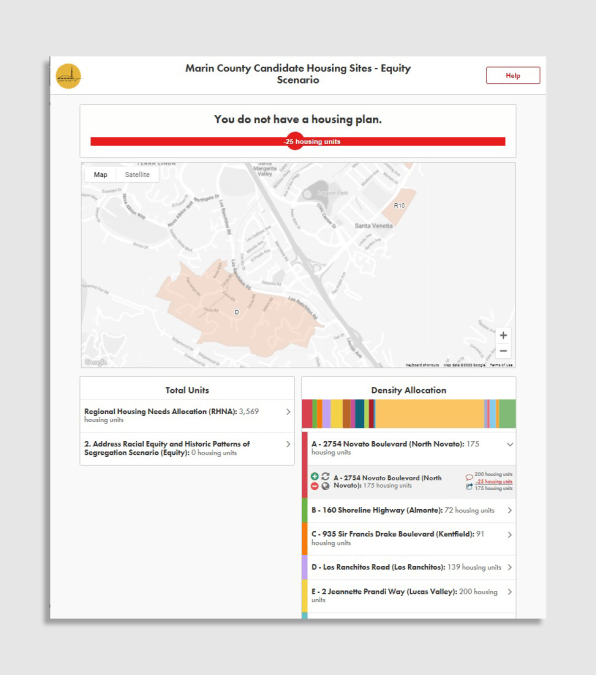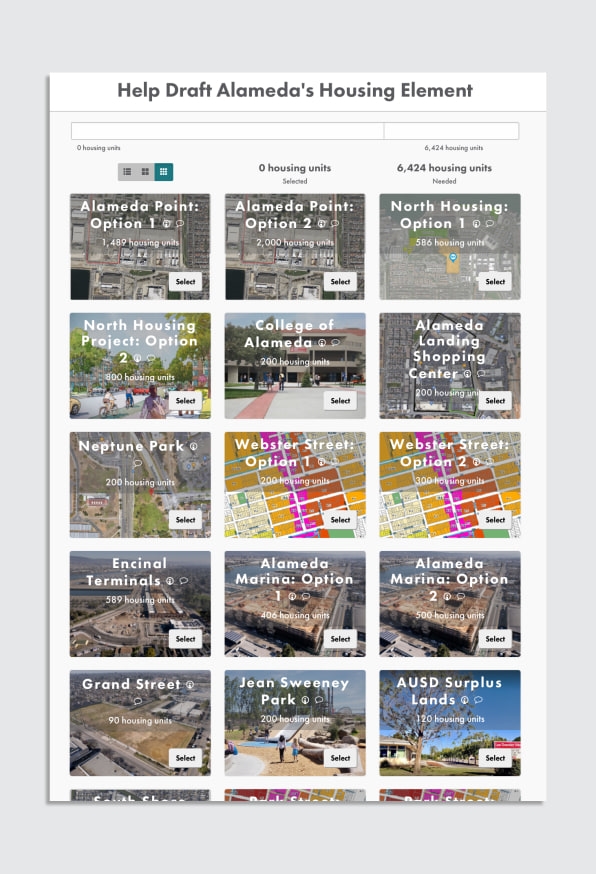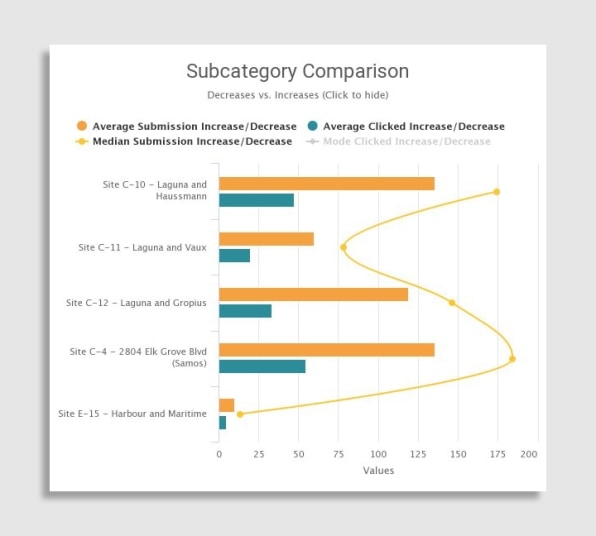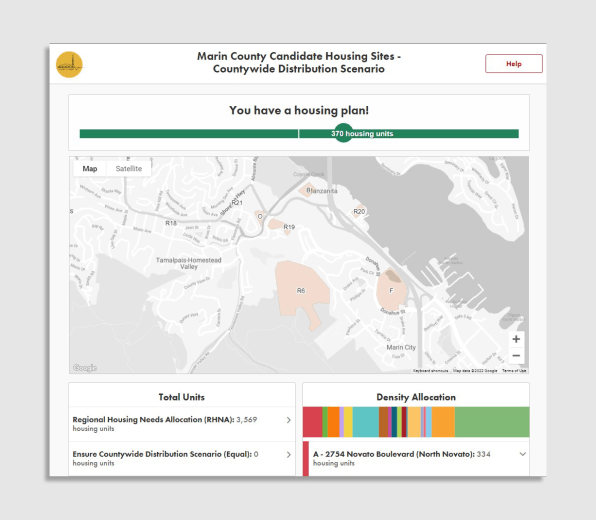Every few years, communities across California come together to engage in one of the most heated and controversial processes imaginable. In compliance with state law requiring communities to accommodate their share of the state’s growing demand for housing, every city is assigned a target number of homes it must make room for. Then comes the complicated part: getting residents to support the specifics on where all those homes will go.
It’s essentially open season for the public to call out “Not in my backyard!” But unless city officials want to risk state funding by not complying with the law, they have to find a way to identify specific sites where growth can occur—ideally without turning their constituents into an angry mob.
A new online tool is helping cities calm this contentious process down. Balancing Act is a simulation that gives residents the ability to participate in the process of deciding how their cities will meet their state targets. But instead of just providing another way of saying where they don’t want development, the tool requires residents to decide where growth should occur. Cities throughout Northern California are using the tool, with an atypically high rate of support from residents.

[Image: Balancing Act]
Chris Adams is president of Balancing Act, a company founded in 1998 to improve public policy facilitation through technology. “Typically, public engagement on housing is local homeowners who are upset about changes that might affect them, might add traffic, might change the character of their neighborhood, and so forth. . . . They scream and yell and they kill a lot of projects,” Adams says. “What we did was helped to create a simulation to put people in the position of a public official or a community problem solver as opposed to just a narrow critic.”
Balancing Act was originally created to help cities with another thorny problem: balancing the budget. The new focus on housing was suggested by a city official who saw its relevance for the process of allocating housing on a map, known as a housing element update.

[Image: Balancing Act]
“We looked at it and said, ‘Okay, this is a budgeting tool, but that’s essentially what we’re talking about here. We have a budget of housing units that’s assigned to us,’” says Christopher Jordan, director of strategic planning and innovation for the city of Elk Grove, California, near Sacramento.

[Image: Balancing Act]
He contacted Adams, and after a few weeks of tweaking the tool, Balancing Act became a website where residents could pick from a list of potential development sites on a map and decide how much housing it should have. A running tally appeared at the top of the screen showing how close each user was to meeting the state’s housing target, and only those users who selected enough sites to hit the target could submit their plan to the city. Jordan says it created a way for the public to be involved in thinking about housing at a citywide scale.

“They couldn’t just come and say, ‘No.’ They had to say ‘No, and. . . . ,’” he says. “No to this site, and replace it with this site.”
More than 1,000 residents used the tool to try their hand at planning out how the city could meet its future housing requirements. “It got people that were interested in the process to think about the sites as a system of sites, and not exclusively the one around the corner from their house,” Jordan says.
Every site ended up with at least 60% support, and the feedback submitted through the tool was used to finalize the housing plan submitted to the state. “It was probably one of the easiest housing element updates I’ve been through from a site selection perspective,” Jordan says.

[Image: Balancing Act]
Adams says the tool has since been fully updated for housing element updates. Cities can use it to predefine areas where growth should be concentrated, or allow residents to pick from a variety of options for specific neighborhoods. In addition to Elk Grove, the tool has been used by several cities in the San Francisco Bay Area, and Adams says the company is now working with cities in Washington state, where similar housing targets get set at the state level. Feedback collected through the tool directly influences the housing plans these cities eventually create.
For a city like Elk Grove, the tool came in especially handy during the pandemic, when public meetings were difficult or impossible. Adams says the online tool isn’t intended to replace that form of public participation in the housing process. For better or worse, vocal NIMBYs will still be able to attend public hearings and shout their opposition. But Adams says Balancing Act is intended to add a more productive alternative to that tried and true method of public engagement–one that acknowledges the tradeoffs involved in planning how communities grow.
“One of the goals is to change the decision-making environment by having many, many more people involved,” he says. It’s a way “[to] remind people that if we say we want housing, this is what is takes, and let’s do this as a community.”
(31)